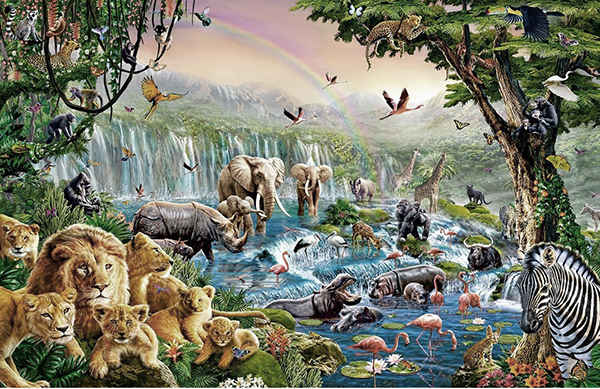What five essential elements must be present to provide a proper habitat for wildlife?
Creating a suitable habitat for wildlife involves several crucial elements that support the diverse needs of various species.

Here are five essential components
Food sources
A diverse array of food sources is vital for sustaining wildlife populations. Different species have different dietary needs, so a habitat should offer a variety of plants, insects, seeds, fruits, and small animals to support a healthy ecosystem. Planting native vegetation and minimizing pesticide use can enhance food availability for wildlife.
Water
Access to clean water is essential for drinking, bathing, and reproduction for many species. Natural water sources: ponds, streams, rivers, and wetlands provide crucial habitats for aquatic species and serve as watering holes for terrestrial animals. Installing water features like birdbaths or small ponds can also attract wildlife to urban or suburban areas.
Shelter
Wildlife require shelter for protection from predators, harsh weather conditions, and for nesting or breeding. Natural shelters can include forests, grasslands, caves, and brush piles. Additionally, providing artificial shelters: birdhouses, bat boxes, and insect hotels can supplement natural habitats and offer refuge for various species.
Space and territory
Sufficient space and suitable territories are essential for wildlife to establish home ranges, establish breeding territories, and forage for food. Habitat fragmentation and loss of natural areas due to human development can disrupt wildlife movement and reduce available space. Conserving large, interconnected areas of habitat and creating wildlife corridors help maintain gene flow and population viability.
Biodiversity
A healthy habitat supports a diverse array of plant and animal species, which in turn enhances ecosystem resilience and stability. Biodiversity provides various ecological functions: pollination, seed dispersal, pest control, and nutrient cycling. Protecting and restoring native habitats, promoting native species diversity, and reducing invasive species can help maintain biodiversity in ecosystems.
By ensuring these five essential elements—food sources, water, shelter, space and territory, and biodiversity—wildlife habitats can thrive, supporting diverse populations of plants and animals.
Conservation efforts focused on preserving and restoring these critical components are vital for the long-term health and sustainability of ecosystems worldwide.












